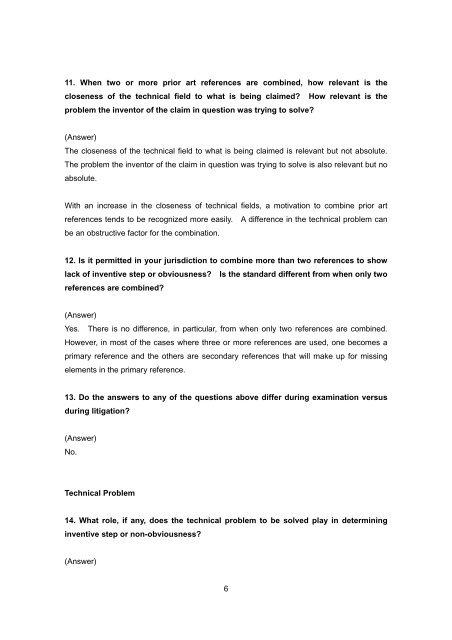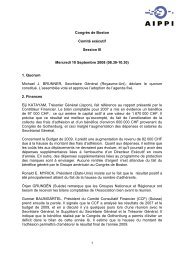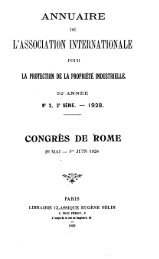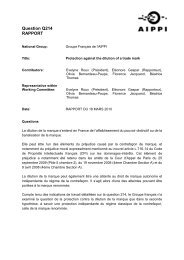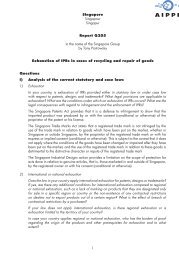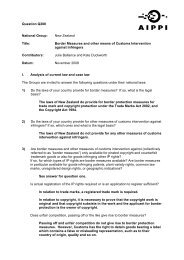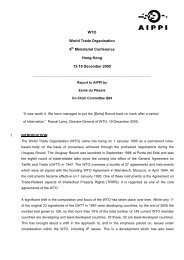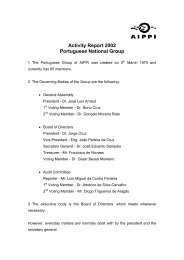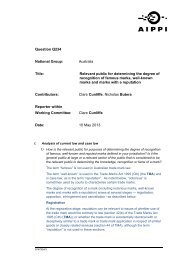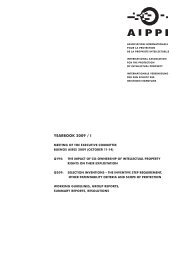Question Q217 - AIPPI
Question Q217 - AIPPI
Question Q217 - AIPPI
Create successful ePaper yourself
Turn your PDF publications into a flip-book with our unique Google optimized e-Paper software.
11. When two or more prior art references are combined, how relevant is the<br />
closeness of the technical field to what is being claimed? How relevant is the<br />
problem the inventor of the claim in question was trying to solve?<br />
(Answer)<br />
The closeness of the technical field to what is being claimed is relevant but not absolute.<br />
The problem the inventor of the claim in question was trying to solve is also relevant but no<br />
absolute.<br />
With an increase in the closeness of technical fields, a motivation to combine prior art<br />
references tends to be recognized more easily. A difference in the technical problem can<br />
be an obstructive factor for the combination.<br />
12. Is it permitted in your jurisdiction to combine more than two references to show<br />
lack of inventive step or obviousness? Is the standard different from when only two<br />
references are combined?<br />
(Answer)<br />
Yes. There is no difference, in particular, from when only two references are combined.<br />
However, in most of the cases where three or more references are used, one becomes a<br />
primary reference and the others are secondary references that will make up for missing<br />
elements in the primary reference.<br />
13. Do the answers to any of the questions above differ during examination versus<br />
during litigation?<br />
(Answer)<br />
No.<br />
Technical Problem<br />
14. What role, if any, does the technical problem to be solved play in determining<br />
inventive step or non-obviousness?<br />
(Answer)<br />
6


